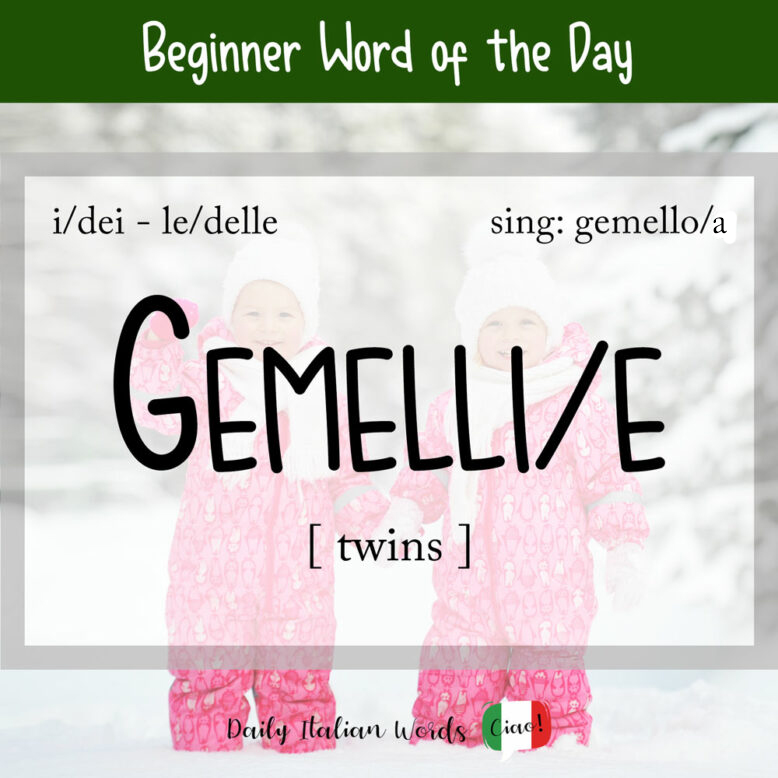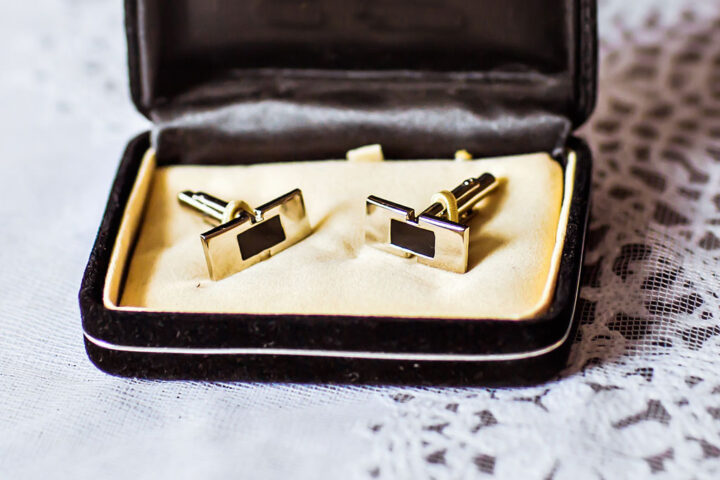The word for twins in Italian is gemelli (masculine, singular: gemello; feminine, singular: gemella).

Whereas in English, we have separate terms for offspring in a multiple birth (twins, triplets, quadruplets, quintuplets, sextuplets, septuplets, octuplets, nonuplets and decuplets), Italian applies the blanket term gemelli regardless of the number. In order to be specific, you must add the number before the word gemelli (e.g. tre gemelli = triplets).
Note that if all the offspring are male or a mix of males and females, you must use the masculine form gemelli, whereas the feminine form gemelle is reserved for two or more girls.
Mario e Maria sono gemelli ma non si assomigliano.
Mario and Maria are twins but they don’t look alike.
Below are some useful terms associated with the word gemelli in Italian:
- gemelli monozigoti / omozigoti = monozygotic twins (identical twins)
- gemelli dizigoti / eterozigoti = dizygotic twins (non-identical or fraternal twins)
- gemelli siamesi = siamese twins

Two closely related verbs are gemellare (to twin) and the reflexive gemellarsi (to twin oneself). They are often used specifically in the context of town twinning.
Roviano è gemellato con il paese spagnolo-catalano di Altafulla.
Roviano is twinned with the Spanish-Catalan town of Altafulla.
Gemelli is also the Italian name for the northern constellation and astrological star sign Gemini which is represented by the twin half-brothers Castor and Pollox, otherwise known as Polydeuces or Dioscuri. Both gemelli and gemini come from the Latin word geminus (twin).
Finally gemello can also be used for anything that matches or is identical to something else. A good example is the word for soulmate or kindred spirit in Italian, anima gemella, which literally translates as twin spirit.
Sono alla ricerca della mia anima gemella.
I’m looking for my soulmate.

Twin beds are called letti gemelli and gemelli on its own is also the word for cufflinks which always come in pairs.

Did you know that…?
There is a type of pasta in Italy called gemelli whose appearance resembles that of two twin tubes twisted around one another. (In actual fact, it is a single s-shaped strand twisted into a spiral.)
Heather Broster is a graduate with honours in linguistics from the University of Western Ontario. She is an aspiring polyglot, proficient in English and Italian, as well as Japanese, Welsh, and French to varying degrees of fluency. Originally from Toronto, Heather has resided in various countries, notably Italy for a period of six years. Her primary focus lies in the fields of language acquisition, education, and bilingual instruction.


